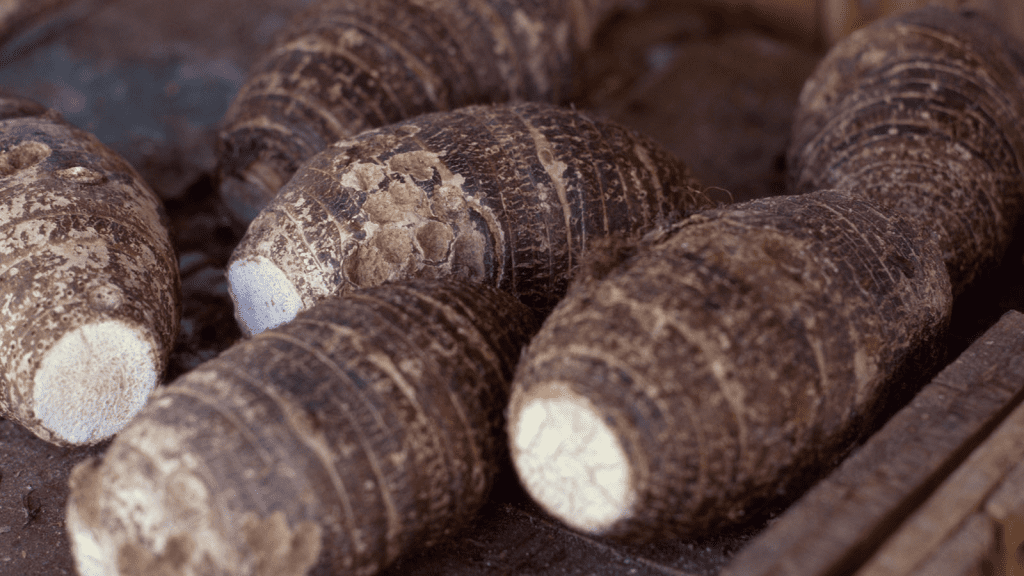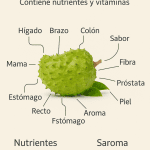Imagine a humble root vegetable that’s been nourishing civilizations for millennia, hiding in plain sight with a treasure trove of health benefits and culinary versatility. Meet taro, the tropical gem that’s ready to transform your kitchen and elevate your wellness game. With its creamy texture, mildly sweet and nutty flavor, and a nutritional profile that rivals any modern superfood, taro is more than just a staple—it’s a game-changer. Whether you’re a foodie seeking bold new flavors or someone looking to fuel your body with nature’s finest, taro is about to become your new obsession. Ready to dive into the world of this vibrant purple root? Let’s uncover why taro deserves a starring role in your diet.

🌱 What Makes Taro So Special?
Taro (Colocasia esculenta) is a starchy root crop that’s been cultivated for thousands of years across tropical regions, from Southeast Asia to the Pacific Islands. Its velvety texture and subtle, earthy sweetness make it a culinary chameleon, seamlessly blending into savory dishes, decadent desserts, and even vibrant smoothies. But taro’s real magic lies in its nutritional powerhouse status. Packed with fiber, potassium, magnesium, calcium, and antioxidants, this unassuming root delivers a punch of health benefits that can transform your body from the inside out.
Why should you care? Because taro isn’t just food—it’s fuel for a healthier, more vibrant you. Its complex carbohydrates provide sustained energy, its fiber supports a thriving gut, and its minerals keep your heart and bones strong. Whether you’re whipping up a cozy soup or indulging in a sweet treat, taro brings flavor and function to every bite.
🧬 The Science-Backed Benefits of Taro
Taro isn’t just another trendy ingredient—it’s a nutritional goldmine backed by science. Here’s why adding taro to your diet could be one of the best decisions you make for your health.
1. Boosts Digestive Health
Taro is a gut’s best friend. Rich in dietary fiber and resistant starch, it promotes regular bowel movements and feeds the beneficial bacteria in your microbiome. This dynamic duo can help reduce bloating, improve digestion, and even lower the risk of colon issues over time. If you’ve been searching for a natural way to keep your digestive system happy, taro is your answer.
2. Supports a Strong Heart
Heart health is non-negotiable, and taro has your back. With high potassium and low sodium content, it helps regulate blood pressure and eases strain on your cardiovascular system. The fiber in taro also works to lower cholesterol levels, reducing the risk of heart disease. Every bite of taro is a step toward a healthier, happier heart.
3. Fuels Sustainable Energy
Say goodbye to energy crashes. Unlike refined carbs that spike and plummet your blood sugar, taro’s complex carbohydrates release energy slowly, keeping you powered up for hours. Whether you’re hitting the gym, tackling a busy workday, or chasing after kids, taro provides the steady fuel you need to stay sharp and energized.
4. Strengthens Your Immune System
In a world full of health challenges, a strong immune system is your first line of defense. Taro is loaded with antioxidants like vitamins C and E, which help your body fend off infections and combat oxidative stress. These powerful compounds neutralize free radicals, protecting your cells and keeping you resilient year-round.
5. Builds Stronger Bones and Muscles
As we age, maintaining bone density and muscle function becomes critical. Taro’s magnesium and calcium work in harmony to support strong bones and smooth muscle contractions. Whether you’re lifting weights or simply aiming to stay active, taro helps keep your body strong and agile.
6. Promotes Radiant Skin
Want that natural glow? Taro’s vitamin E and antioxidants fight inflammation and protect your skin from environmental damage. By reducing oxidative stress, taro can help keep your skin looking youthful and vibrant, making it a beauty-boosting ingredient you’ll want to embrace.

🍴 How to Prepare Taro Like a Pro
Taro is as versatile as it is nutritious, but there’s one golden rule: never eat it raw. Raw taro contains calcium oxalate crystals, which can irritate your mouth and digestive tract. Cooking taro thoroughly unlocks its flavor and makes it safe to enjoy. Here’s how to get started.
🛒 Choosing and Prepping Taro
Start with quality. Look for taro roots that are firm, heavy for their size, and free of soft spots or blemishes. To prepare, wear gloves to avoid skin irritation from the oxalate crystals. Peel the rough outer skin carefully, then rinse the root thoroughly under running water to remove any dirt or residue.
🔥 Cooking Methods to Master Taro
Taro shines in a variety of cooking techniques, each bringing out its unique texture and flavor.
Boil: Cube the taro and simmer in water for 15–20 minutes until fork-tender. Perfect for mashes or stews.
Steam: Preserve taro’s natural flavor and creamy texture by steaming for 20–25 minutes. Ideal for delicate dishes.
Roast: Toss taro chunks with olive oil, salt, and your favorite spices, then roast at 400°F (200°C) for 25–30 minutes for a crispy, caramelized finish.
Fry: Slice taro thinly and fry until golden for addictive homemade taro chips.
🥗 Creative Ways to Enjoy Taro
Taro’s versatility makes it a star in both savory and sweet dishes. Here are some mouthwatering ideas to spark your culinary creativity.
Creamy Taro Mash
Blend boiled taro with a splash of plant-based milk, a pinch of salt, and a pat of butter for a velvety side dish that pairs perfectly with roasted meats or grilled veggies.
Taro Curry
Add cubed taro to your favorite curry recipe for a creamy, hearty texture that soaks up spices like a dream. Pair with rice or naan for a comforting meal.
Crispy Taro Chips
Thinly slice taro, toss with olive oil and rosemary, and bake or fry until crisp. Sprinkle with sea salt for a healthy snack that rivals potato chips.
Taro Smoothie Bowl
Blend cooked taro with banana, coconut milk, and a touch of honey for a vibrant, nutrient-packed smoothie bowl. Top with granola and fresh fruit for a breakfast that feels like dessert.
Taro Soup
Simmer taro with ginger, garlic, and coconut milk for a warming, aromatic soup that’s perfect for chilly days.
Sweet Taro Dessert
Mash taro with honey and cinnamon, then bake into a pudding for a naturally sweet treat that’s both indulgent and wholesome.
⚠️ Mistakes to Avoid with Taro
To make the most of taro, steer clear of these common pitfalls.
Never eat taro raw—it’s not just unpleasant, it’s potentially harmful due to calcium oxalate crystals.
Always wash peeled taro thoroughly to remove dirt and bacteria.
Start with small portions if you’re new to taro, as its high fiber content can cause bloating if overdone.
Test for allergies by trying a small amount first, especially if you have a history of food sensitivities.

💡 Taro Hacks to Elevate Your Game
Want to take your taro experience to the next level? Try these creative ideas.
Taro Fries: Cut taro into wedges, season with paprika and garlic powder, and bake for a healthier twist on fries.
Taro Ice Cream: Blend taro with coconut cream and freeze for a creamy, dreamy dessert.
Taro Stir-Fry: Cube taro and toss it into a veggie stir-fry for added texture and nutrition.
Taro Latte: Mix mashed taro with warm milk and a touch of sweetener for a cozy, purple-hued drink.
🧘 Wellness Tips to Amplify Taro’s Benefits
Taro is a fantastic addition to a balanced lifestyle, but you can maximize its benefits with a few simple habits.
Stay hydrated with 8–10 glasses of water daily to support taro’s fiber in promoting digestion.
Pair taro with lean proteins like chicken or tofu and colorful vegetables for a nutrient-packed plate.
Incorporate light exercise, like walking or yoga, to boost digestion and energy levels.
Prioritize 7–9 hours of quality sleep to help your body absorb taro’s nutrients and recover optimally.
🚨 Taro Safety: What You Need to Know
While taro is safe and delicious when cooked, there are a few precautions to keep in mind.
Raw taro can cause irritation due to calcium oxalate crystals, so always cook it thoroughly.
Allergies to taro are rare but possible—watch for signs like rashes or swelling and consult a doctor if needed.
If you’re prone to kidney stones, talk to your doctor, as taro contains oxalates that may pose a risk.
If you take medications that affect potassium levels, check with your healthcare provider before adding taro to your diet.
🌟 Why Taro Deserves a Spot in Your Life
Taro isn’t just another ingredient—it’s a tropical treasure that brings flavor, nutrition, and excitement to your table. From supporting your heart and digestion to fueling your energy and glowing skin, this vibrant root is a wellness warrior disguised as a humble vegetable. Its versatility means you can enjoy it in countless ways, from crispy chips to creamy desserts, all while nourishing your body with every bite.
Next time you’re at the market, don’t pass by those unassuming taro roots. Grab a few, experiment with new recipes, and let taro’s magic transform your meals. Whether you’re roasting, mashing, or blending, taro is your ticket to a healthier, more delicious life. So, what are you waiting for? Unleash the power of taro and discover a world of flavor and wellness today.









